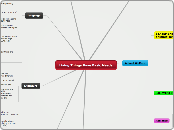Living Things Have Basic Needs
Resources
You Tube:
"RSPCA Pip the dog"
"RSPCA Australia - Adopt a Pet"
''RSCPA - Happy Tails Day"
"R.S.P.C.A. TV Commercial"
Google Scholar:
RSPCA website and education for schools
RSPCA website and eduction for schools
Redlands Animal Shelter
Vets (visitor or contact)
Animal Welfare
STATEMENT: Children can save animals' lives
How can chlidren save an animal?
What might animals need to stay alive?
Which animals might need saving?
How can we protect our animals?
Have any other children saved animals before?
Who helps animals when they are sick?
How many animals don't have a home?
What happens to animals who don't have a home?
How does an animal get better when it is sick?
Local vet
How can we help the animals in Capalaba or the Redlands?
Redlands Animal Shelter
Local vet
What do animals need to survive?
Five Freedoms
RSPCA
Real World Problems
Large numbers of animals without a home each year
How many animals are adopted from RSPCA each year?
Owners who do not take good care of their pets
What happens to mistreated pets?
The need to foster kindness and respect for animals and the environment through empathy
How do we teach others to love and respect animals? How can we show others that we have empathy for animals?
RSPCA Qld requires $30 million annually to support our animal centres, programs and services.
How might we raise money to help the RSPCA? Can we encourage others in our school to raise money?
RSPCA Million Paws Walk in May
Redlands
Local veterniray clinic
How to care for sick animals
How can we educate people in our community?
The number of homeless animals in the Redlands
Redlands Animal Shelter
The Redlands community and the RSPCA
Adopting pets
Rescuing animals
Raising money
Main topic
Science
Biological Sciences:
Living things have basic needs, including food and water
- Recognizing the needs of living things in a range of situations such as pet at home
- Comparing the needs of plants and animals
Science as a Human Endeavor
Nature and development of Science
Science involves exploring and observing the world using the senses.
- Recognizing that observation is an important part of exploring and investigating the things and places around us.
- Sharing observations with others and communicating their experiences
- Exploring and observing using hearing, smell, touch, sight and taste.
Science Inquiry
Questioning and Predicting
- Respond to questions about familiar objects and events
Planning and conducting
- Explore and make observations by using the senses.
Processing and analyzing data and information
- Engage in discussions about observations and use methods such as drawing to represent ideas.
Communicating
- Share observations about ideas
Language
Understand that texts can take many forms, can be very short (for example an exit sign) or quite long (for example an information book or a film) and that stories and informative texts have different purposes (ACELA1430)
Understand that punctuation is a feature of written text different from letters; recognise how capital letters are used for names, and that capital letters and full stops signal the beginning and end of sentences (ACELA1432)
Understand concepts about print and screen, including how books, film and simple digital texts work, and know some features of print, for example directionality (ACELA1433)
Recognise that sentences are key units for expressing ideas (ACELA1435)
Recognise that texts are made up of words and groups of words that make meaning (ACELA1434)
Explore the different contribution of words and images to meaning in stories and informative texts (ACELA1786)
Understand the use of vocabulary in familiar contexts related to everyday experiences, personal interests and topics taught at school (ACELA1437)
Know that spoken sounds and words can be written down using letters of the alphabet and how to write some high-frequency sight words and known words (ACELA1758)
Sound and letter knowledge
Recognise the letters of the alphabet and know there are lower and upper case letters (ACELA1440)
Literature
Recognise that texts are created by authors who tell stories and share experiences that may be similar or different to students’ own experiences (ACELT1575)
Respond to texts, identifying favourite stories, authors and illustrators (ACELT1577)
Share feelings and thoughts about the events and characters in texts (ACELT1783)
Identify some features of texts including events and characters and retell events from a text (ACELT1578)
Recognise some different types of literary texts and identify some characteristic features of literary texts, for example beginnings and endings of traditional texts and rhyme in poetry (ACELT1785)
Literacy
1.
Listen to and respond orally to texts and to the communication of others in informal and structured classroom situations (ACELY1646)
*s 2.
Use interaction skills including listening while others speak, using appropriate voice levels, articulation and body language, gestures and eye contact (ACELY1784)
3.
Deliver short oral presentations to peers (ACELY1647)
Interpreting, analysing, evaluating
1.
Identify some differences between imaginative and informative texts (ACELY1648)
*
3.
Use comprehension strategies to understand and discuss texts listened to, viewed or read independently (ACELY1650)
*Creating texts
1.
Create short texts to explore, record and report ideas and events using familiar words and beginning writing knowledge (ACELY1651)
*
2.
Participate in shared editing of students’ own texts for meaning, spelling, capital letters and full stops (ACELY1652)
3.
Produce some lower case and upper case letters using learned letter formations (ACELY1653)
4.
Construct texts using software including word processing programs (ACELY1654)
Religious Education
Social Justice
